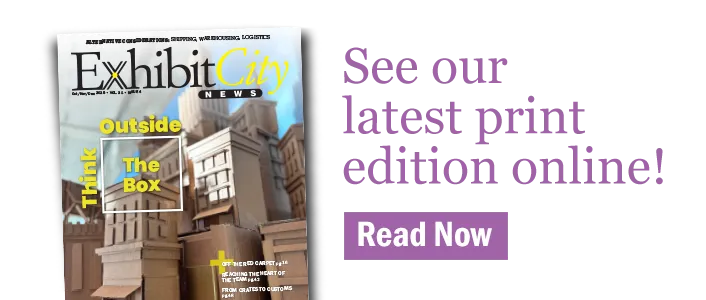by Sven Bossu
Artificial Intelligence (AI) is transforming human society in fundamental and profound ways. It is no longer about playing chess. AI is now being used for developing new antibiotics, for education and for writing articles. It is touching on a rapidly growing number of aspects of society, including events.
Two years ago, AIPC held its annual conference in Lausanne at the Swiss Tech Convention Center, at the heart of a university campus. One of the speakers was Wictor Burie, who developed intelligent flooring for convention centers. For me, it was an eye-opener on the value AI can bring to events, both at the level of the attendee experience and at the level of the management of the event.
Looking at the level of attendee experience, there are the obvious ones, like the use of facial recognition for the event check-in process. Not only will this result in a shorter processing time, but it makes the check-in safer as there is no contact required. Another one are the chatbots, which are multichannel solutions that are easy to implement and to use.
However, the more interesting routes to explore are about the use of data. As the 231 million users of Netflix will know, the streaming service offers recommendations based on your use of the platform (it is quite interesting to compare the suggestions made to you with those made to your children). The same can be done at the level of an event, especially those events that have a high level of recurrent delegates and last for several days. In a previous life, I managed SIBOS, the largest financial event bringing together 8,000 senior bankers for four days. The conference program is composed of different streams, all offering great content brought by excellent speakers. However, for the delegates it is a real challenge to navigate themselves through the different topics and create the agenda that is the best fit for them. AI comes into play precisely in that scenario. Provided that attendees give their authorization, AI can analyze their interests, geographical location, social media data, career experience, etc. Additionally, it can analyze past behavioral data. Subsequently, AI can give curated recommendations on sessions to attend and exhibitors to visit.
Another challenge for delegates is networking. The AIPC annual conference is relatively small (150-180 attendees), allowing delegates to (almost) meet/connect with all the participants. For large conference like SIBOS, this is far less the case, and we all know that meeting people is the most valuable element of a conference. Once again, if allowed by the attendees, matchmaking engines powered by AI can analyze attendees’ profiles and behavior and suggest meetings with like-minded peers or suitable exhibitors (a bit like Tinder for business).
Next to better attendee experience, there are also clear wins for the organizer and venue. Cost reduction is one of them, since AI can automate many of the tasks that otherwise would need to be required by an actual person. For example: the facial recognition mentioned above also means that far less staff is needed for the check-in process.
But the most interesting part sits with the data, and I believe this is the level where venue and organizer need to become partners. AI in events shouldn’t just be used to offer a better service to the delegate during the event, but also to collect, organize, and analyze attendee data throughout the event. This will allow people to obtain a better insight into delegates’ behavior and improve future events. This is, of course, important for the organizer, but also for the venue. As an example: the use of “heatmaps” to analyze the movement-behavior of delegates in the building will provide venues a fact-based view on how delegates navigate through the facilities, allowing venue sales staff to provide unique value to their customers when it comes to designing the event.
In a period where customer experience is everything, AI is the way to go for all parties involved in organizing successful event. One more reason to create true partnerships between them.























